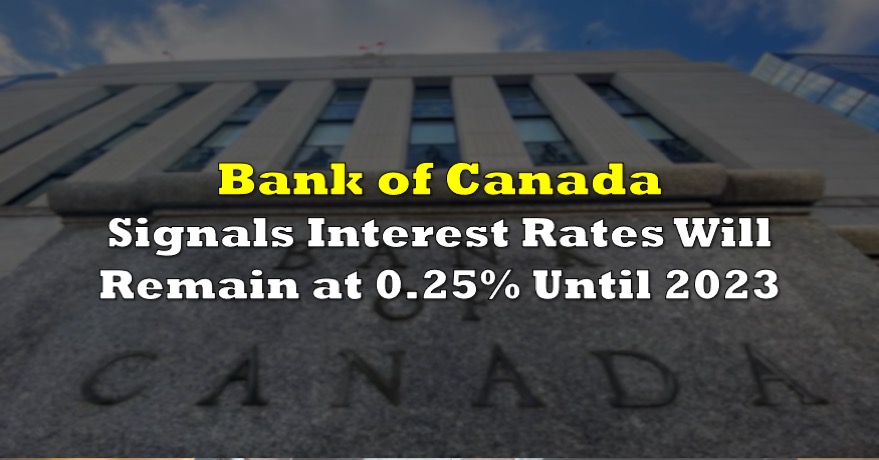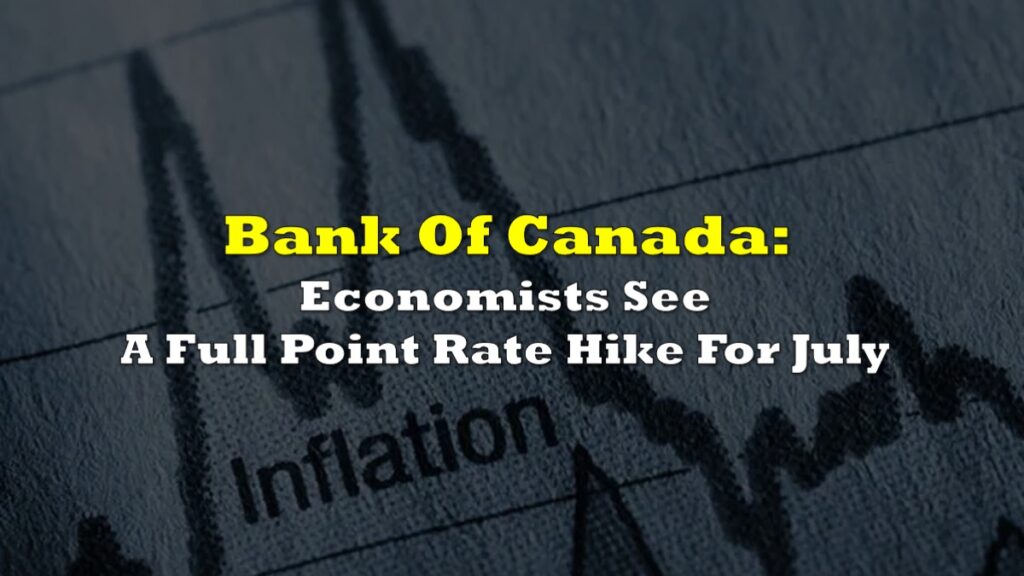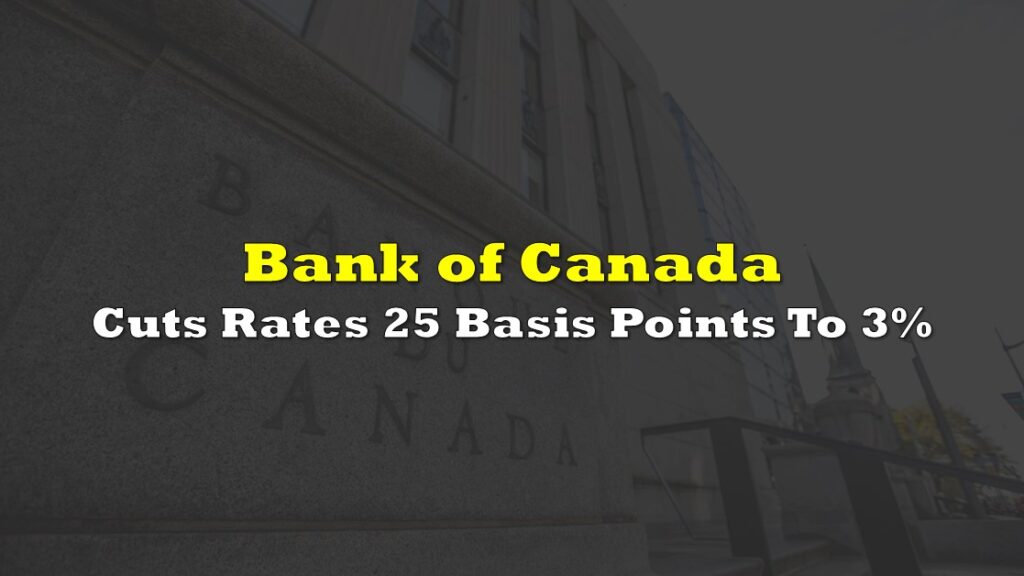The Bank of Canada (BoC) has signaled it will keep interest rates at the lower bound of 0.25% for at least the next few years, citing the economy’s excess supply as the downward pressure on a full recovery.
On Wednesday, the BoC unveiled its Monetary Policy Report for the month of October, announcing that it will take until at least 2023 before Canada’s economy is back on track to pre-pandemic levels. As a result, the central banks plans to keep interest rates historically low for the foreseeable future. Given that excess supply continues to burden the Canadian economy despite a moderate recovery over during the summer, inflation will nonetheless remain suppressed until at least 2022.

According to Governor Tiff Macklem’s policy makers, Canada’s economy will continue to suffer from a significant gap between actual output and potential output, which will not contract within the next three years. The economy has now progressed into the “recuperation” phase, which means although it will still continue to rebound, it will do so in lengthy and uneven segments that will vary across sectors – especially those that have been disproportionately affected by the pandemic.
In the meantime, the BoC also revised its growth forecast for the third quarter to an annualized 47.5%, with stronger full-year growth by the end of the year. However, the economy will still suffer from permanent scarring as a result of the pandemic, which in turn will hinder the rate of further potential growth by 0.8% between 2020 and 2023. The BoC brought attention to the steep contraction of the labour market and permanent job losses as the cause behind the long-term negative effects on the economy’s expansion.
Moreover, the long-term scarring effects will also be evident due to subdued business investment and a reduction in the labour force participation rate. Much of this will stem from interruptions to immigration, in addition to a decrease in the employment rate as a result of an aging Canadian population. Indeed, these factors will ultimately create a downward effect on labour productivity, which will limit growth in the domestic economy.

Information for this briefing was found via the Bank of Canada. The author has no securities or affiliations related to this organization. Not a recommendation to buy or sell. Always do additional research and consult a professional before purchasing a security. The author holds no licenses.









